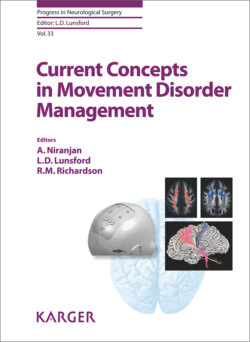Читать книгу Current Concepts in Movement Disorder Management - Группа авторов - Страница 7
Series Editor’s Note
ОглавлениеThe early expansion of our knowledge of brain mapping and function began in the late 1900’s and progressed to surgical intervention in the early part of the 20th century. Early interest was stimulated by the lack of effective medical options for diseases with often relentless progression. Refinement of movement disorder surgery was facilitated by the development of precision guidance devices coupled with gradually improving imaging methods to define the targets and circuits amenable to inactivation. The absence of corresponding animal models led to trials of various ablative surgery in patients, eventually leading to refinement of the targets. Once dopaminergic agents became available for Parkinson’s disease, interest in ablative surgery waned and an entire generation of surgeons lacked training in movement disorder surgery techniques. The role of medical management and its benefits and risks changed over twenty years. As new brain mapping techniques using computed tomography and then magnetic resonance imaging became available, a new era of movement disorder surgery emerged. Ablative techniques gave way to neuromodulatory methods using high frequency stimulation of deep brain targets to functionally if temporarily ablate abnormal movement disorders. A better balance has now developed between ablative and stimulation based techniques. Less invasive ablative techniques with radiosurgery and focused ultrasound are available, especially for patients not eligible for placement of deep brain electrodes. Functional mapping of brain function has been enhanced by intraoperative recording techniques. But even these advances may not be needed in all patients. Deep brain surgery without microelectrode recording was considered taboo for many years. Now patients are having surgery in MRI units while asleep. Future trials of gene vectors may yet provide an additional option for certain movement disorders. The current volume of Progress in Neurological Surgery brings together international expertise to define the options, technologies, and future of movement disorder surgery. It is a bright future and a historic past.
L. Dade Lunsford, MD, FACS, FAANS, Pittsburgh, PA
